Training with data is more popular and accessible than ever. Using a heart rate monitor or power meter allows riders to track training sessions, analyse fitness improvements and pace efforts.
But what are the pros and cons of training with heart rate versus training with power, and what’s the best option for you?
A heart rate monitor is one of the most widely used training tools in cycling because of its simplicity, ease of use and low cost, offering riders an affordable route into training with data.
However, with power meters becoming cheaper than ever and an increasingly common sight aboard the bikes of non-professional cyclists – not to mention the integration of power meters into smart trainers – it’s logical to ask whether it’s better to train with a heart rate monitor or a power meter.
After all, it’s not always clear exactly what a power meter offers that a heart rate monitor doesn’t, or whether you should abandon heart rate training entirely if you decide to upgrade to a power meter.
To get some answers, let’s take a look into how each tool works, their respective pros and cons, as well as some tips on combining the two for the best training results.
How heart rate monitors and power meters work

Most heart rate monitors work by measuring the electrical signals generated by your heart as it beats. A simple chest strap sends that signal to a connected device like a bike computer or smartwatch.
Some wristwatch heart rate monitors use a different method, which involves shining light into the skin and optically measuring the amount of light reflected back, which is affected by the blood flow within the arteries. This measurement is taken at the wrist and therefore doesn’t require a chest strap.
Heart rate straps are generally considered to be more accurate than wrist-based heart rate monitors.
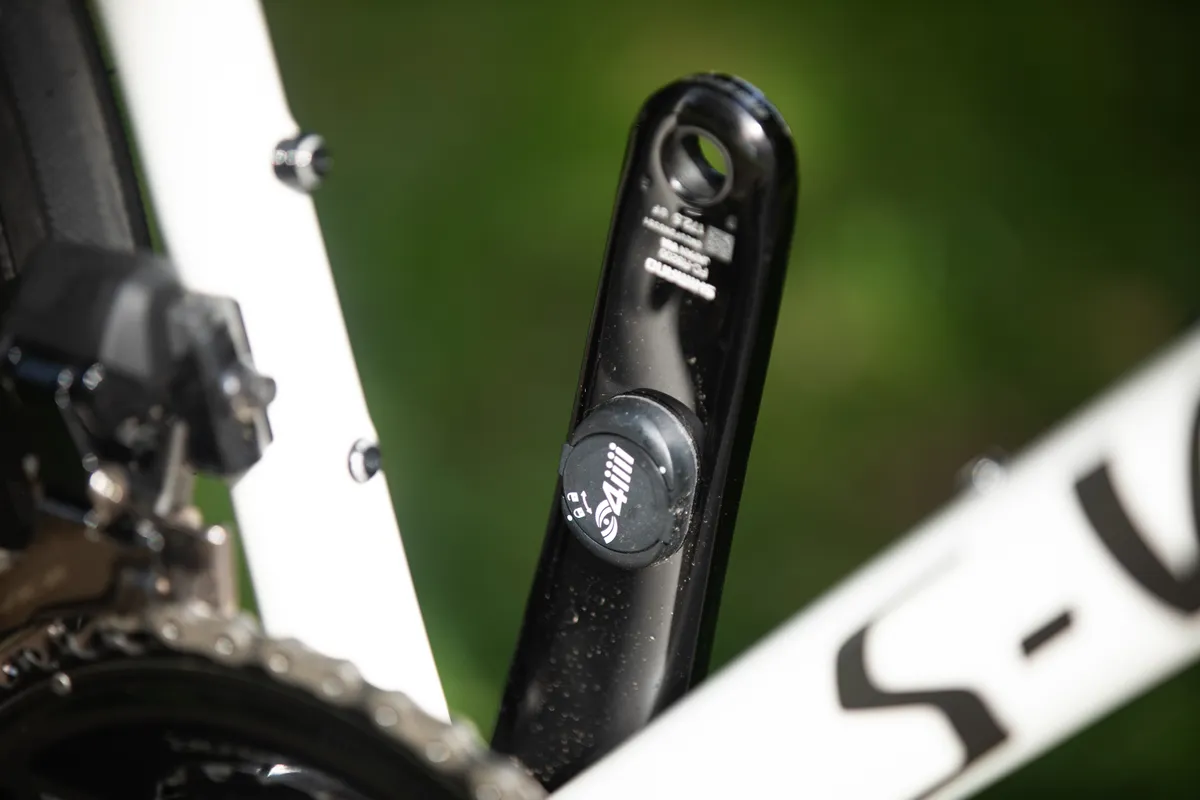
In comparison, a power meter is a component on the bike itself (e.g. spider, pedals, cranks etc), or on a smart trainer, with a number of strain gauges, which measure the force applied when pedalling.
Using measurements of both the torque applied and angular velocity (or cadence), it’s possible to then calculate power output (measured in watts).
It’s quite clear, then, that although both tools are used for similar purposes — that is, to provide data to guide your training and racing — they’re actually measuring two very different things.
Why train using a heart rate monitor?
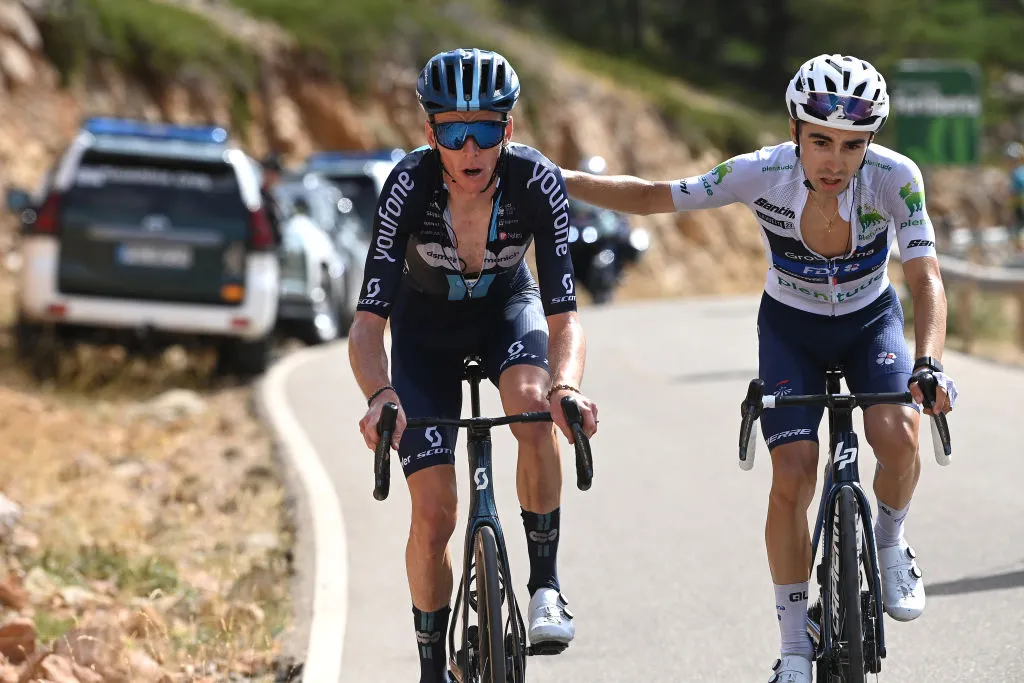
Starting with a heart rate monitor, its greatest strength is cost-effectiveness.
A reliable heart rate monitor can be picked up for less than £100, and if you already have an existing head unit from the likes of Garmin, Wahoo, Polar, a compatible chest strap may be all that’s needed.
Using a heart rate monitor is very straightforward — another string to its bow.
Pairing your chest strap with a head unit, or recording with your smartwatch, is quick and simple.
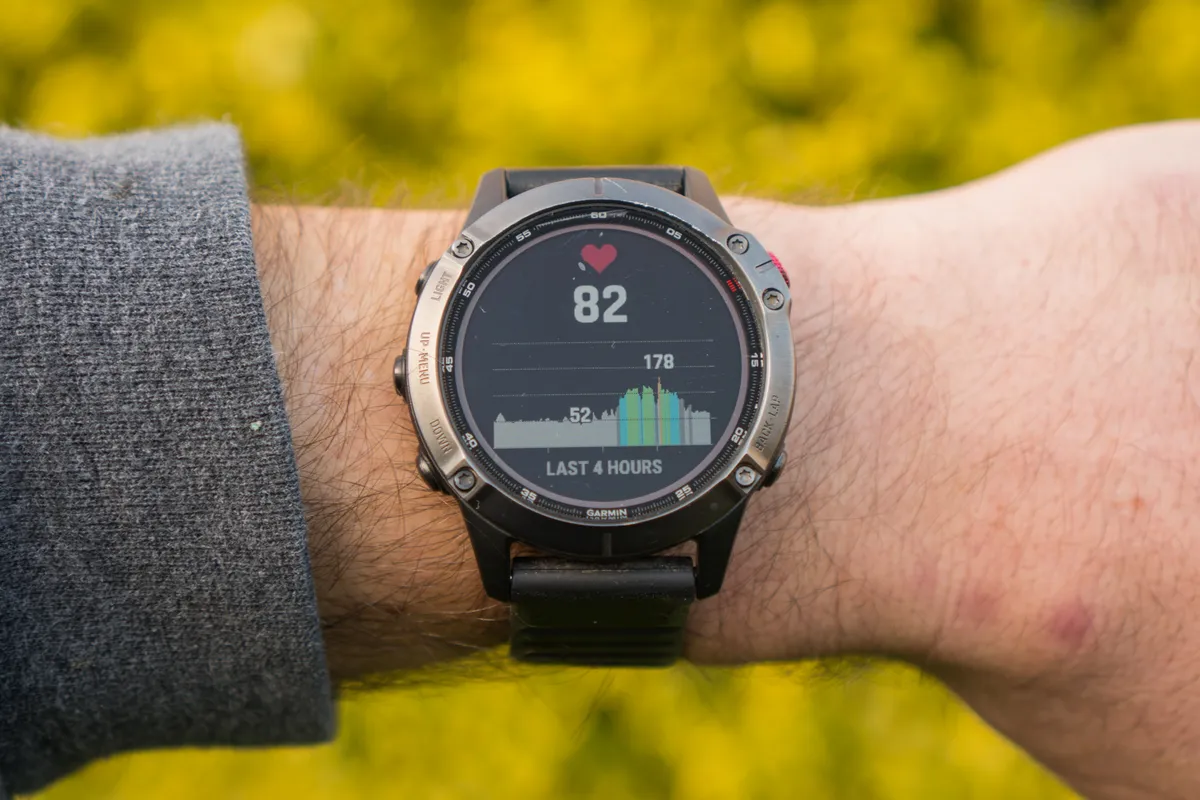
By performing some very basic testing, you can quickly establish the training zones you need to work within to provide some structure to your training.
Heart rate monitors work well in situations where the riding intensity is kept relatively stable, such as longer, base training rides while working on your cycling endurance.
In addition, they can be very useful in recovery workouts to ensure your effort level is kept low enough to not induce any further fatigue.
Where heart rate training is limited, however, is in the lag associated with the heart’s response to changes in exercise intensity. Many external factors can affect that response.
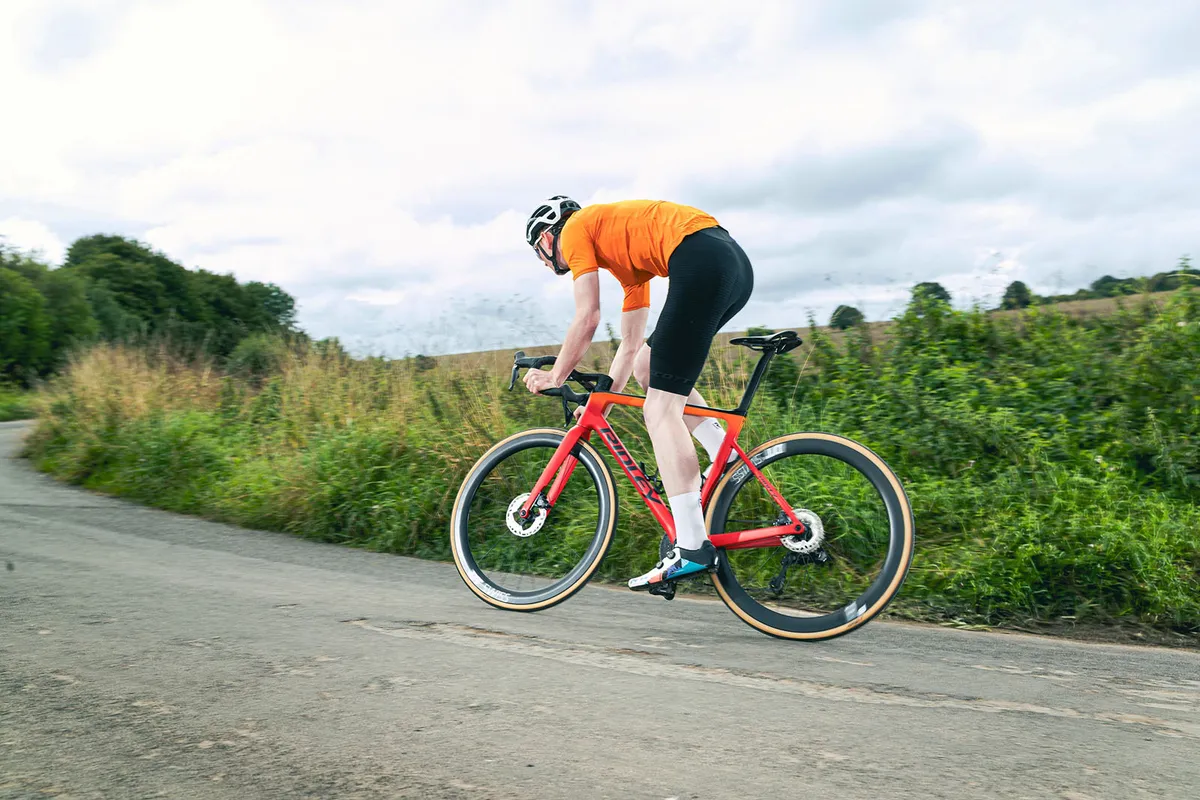
When riding in a very stochastic or punchy way, the heart rate response lags behind these sudden changes in effort.
Therefore, it can’t provide reliable real-time feedback of how hard you’re pushing on the pedals. Practically speaking, this makes pacing short high-intensity intervals very difficult.
Nor can a heart rate monitor tell you exactly how hard you’re riding during these short efforts, as your heart is playing catch-up.
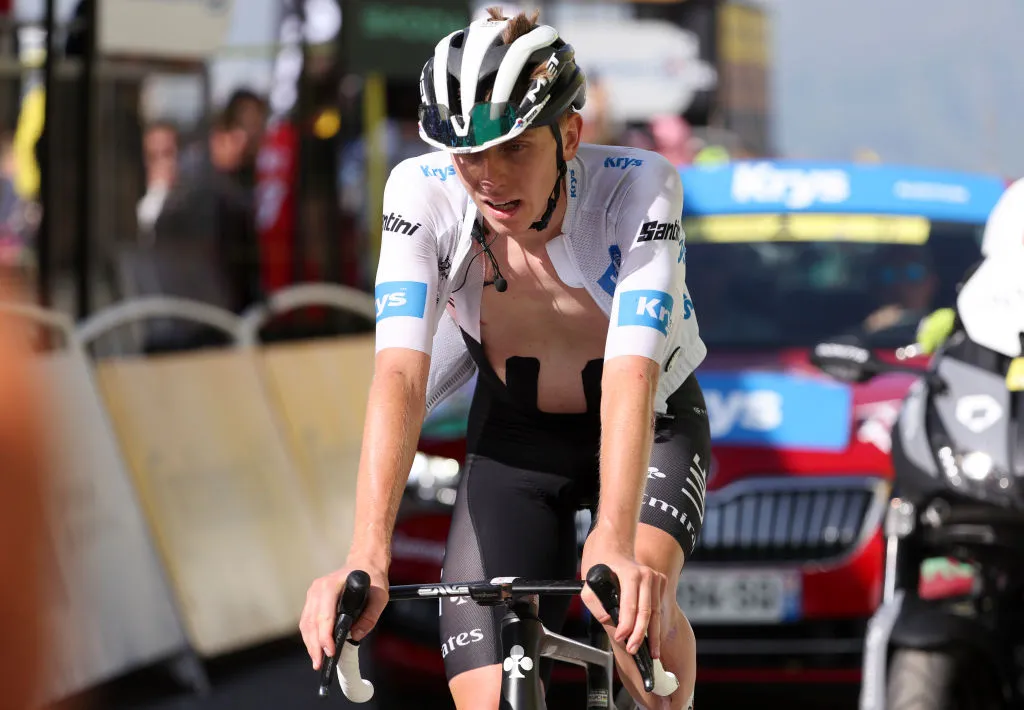
What’s more, factors like your hydration level, air temperature, the amount of sleep you’ve had, levels of caffeine in your system and altitude can significantly change the heart rate at a given intensity.
This further undermines the reliability and consistency of the data you’ll use to train with and analyse after your ride.
Pros and cons of training with heart rate
Pros
- Affordable
- Easy to use
- Easy to understand basic data & establish training zones
- Good for pacing long efforts
- Can be an indicator of fatigue, illness or overtraining
Cons
- Susceptible to heart-rate lag
- Can be affected by a wide range of external factors
Why train with a power meter?
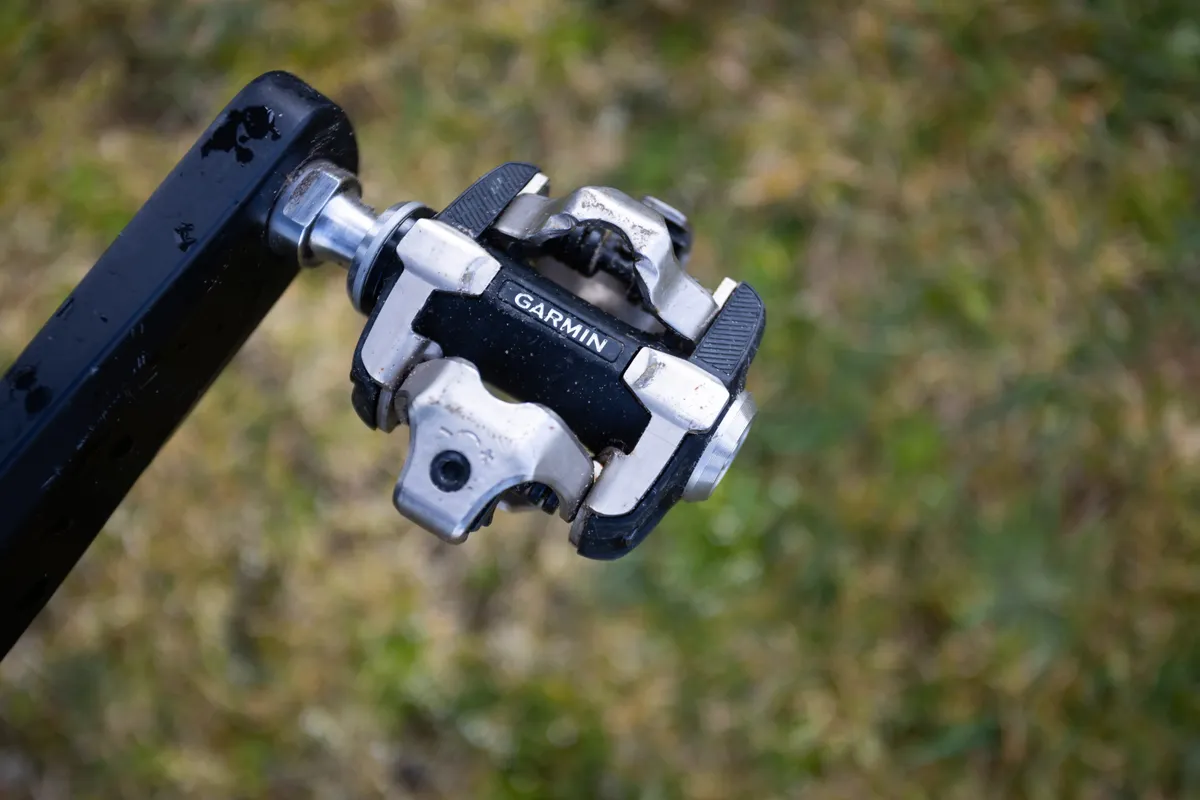
Unlike heart rate data, which represents your body's response (and delayed) to your input on the pedals, a power meter is a real-time measure of your output, i.e. what your effort is actually amounting to in the real world.
The key benefits of training with a power meter are the instantaneous feedback it provides and the lack of external influences that would otherwise undermine the data.
A power meter also allows for the objective measurement of fitness progression over time, such as improvements in your Functional Threshold Power.
Most power meters sample the forces applied during pedalling many times per second, giving very quick feedback that’s extremely useful when it comes to pacing both longer and shorter efforts.
The precision and real-time feedback of a power meter also allows you to target specific training adaptations easier than with a heart rate monitor.
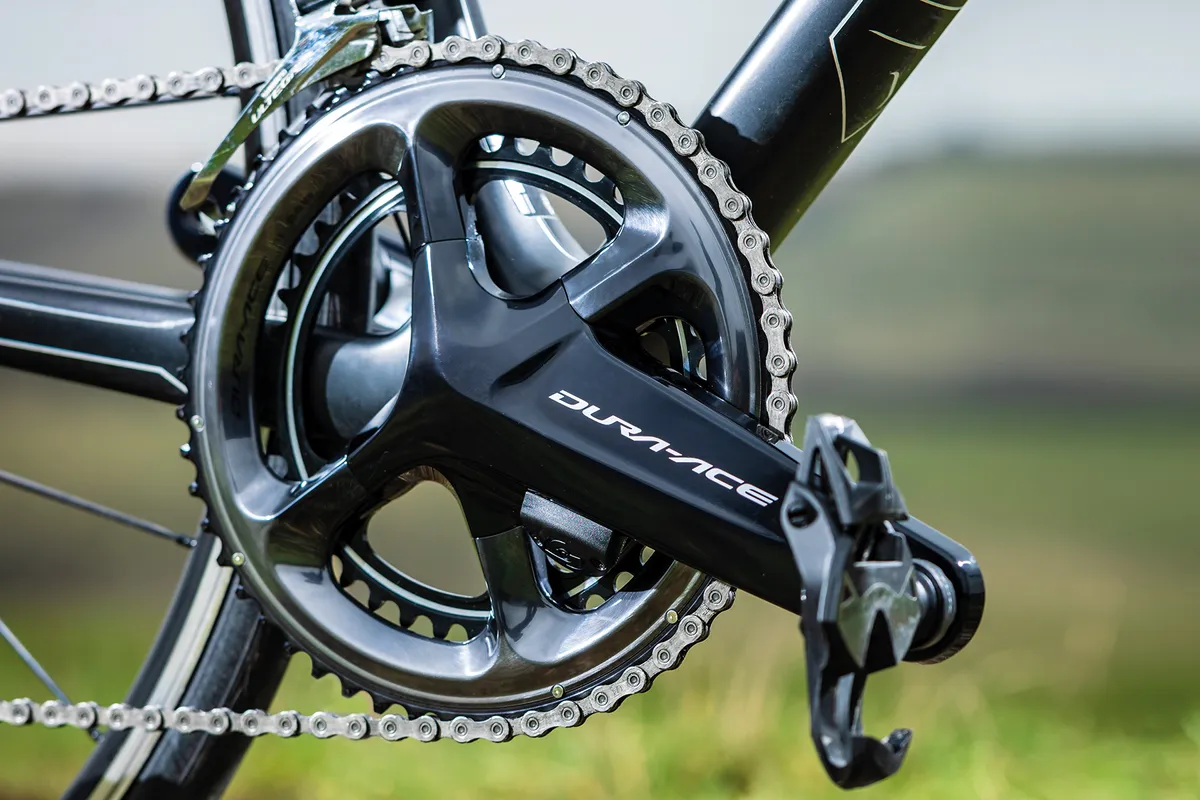
The best power meters can even relay each leg’s contribution to the power production, which can help indicate any left-right imbalances.
In addition, performing either basic field testing or using a power meter in combination with lactate and/or VO2 max measurements in a lab, it’s possible to gain a wealth of understanding on where your individual strengths and weaknesses are.
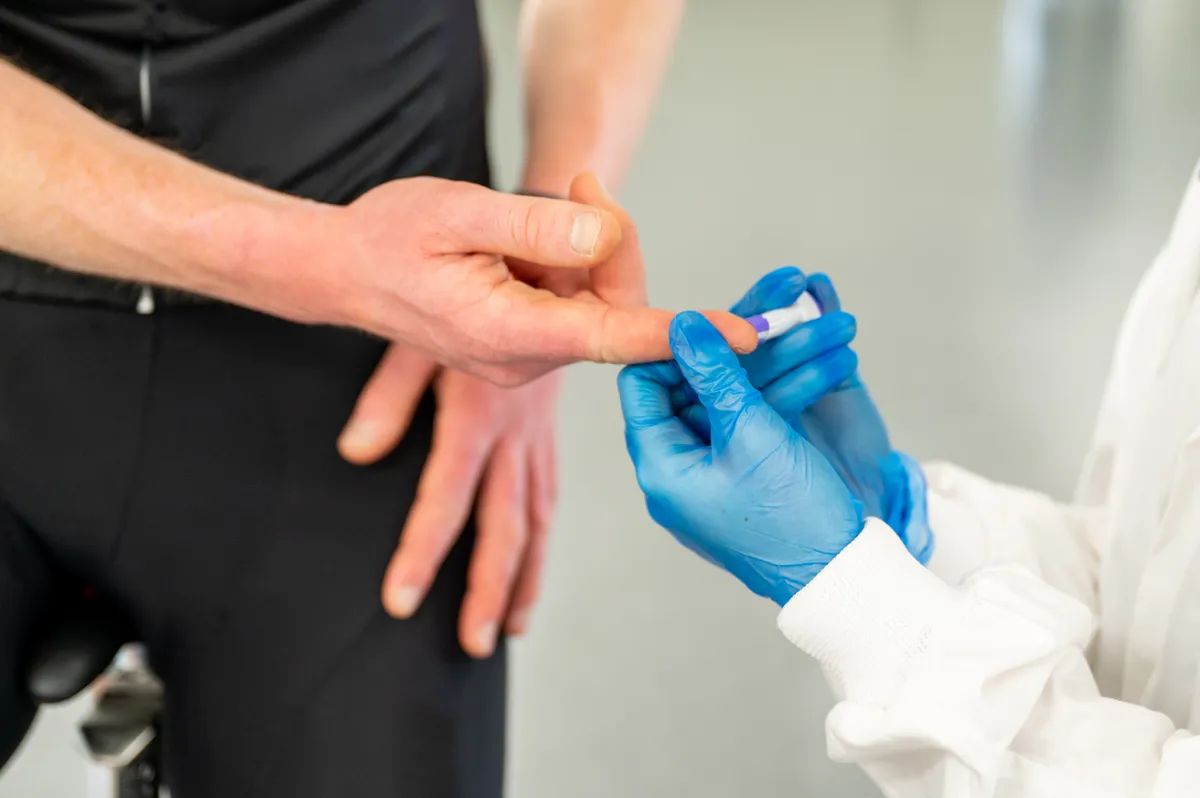
This will help you decide what to focus on improving in training and which cycling discipline may suit you the best.
The accuracy of power also demonstrates the benefit of the latest smart turbo trainers, which can automatically control the resistance to ensure you’re hitting the exact power numbers required to get the greatest benefit out of your session.
The drawbacks of power meters are mostly centred around their cost and the greater understanding they require.
You need to know how to train with power to get the most out of them during sessions and when performing your post-ride analysis.
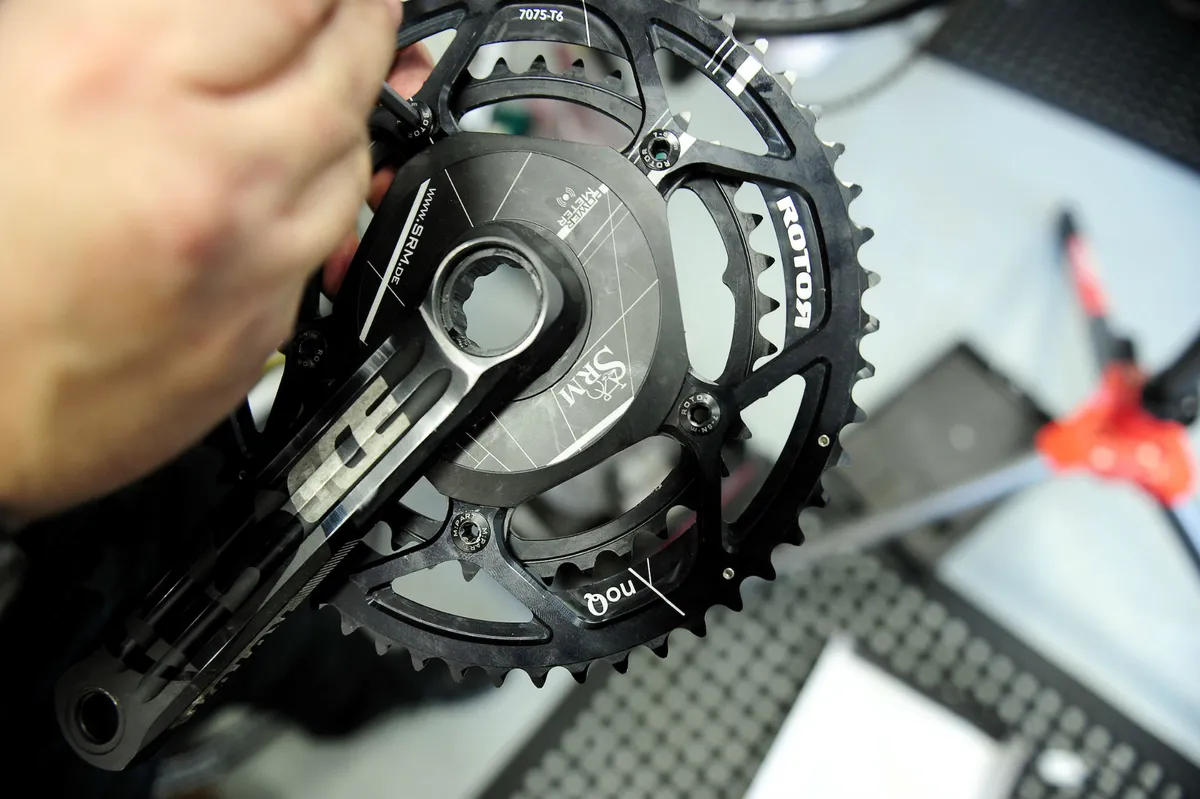
Wattage jumps around a lot more than heart rate when riding, and this can take some getting used to, particularly if you are tasked with riding to a specific wattage for a training session.
Some power meters also need to be calibrated on a regular basis to ensure the wattages are accurate, although this is normally a simple task.
The wealth of metrics available in cycling apps like TrainingPeaks, Golden Cheetah and WKO also mean that it’s not immediately obvious what the data is telling you and what you should do with it right away.
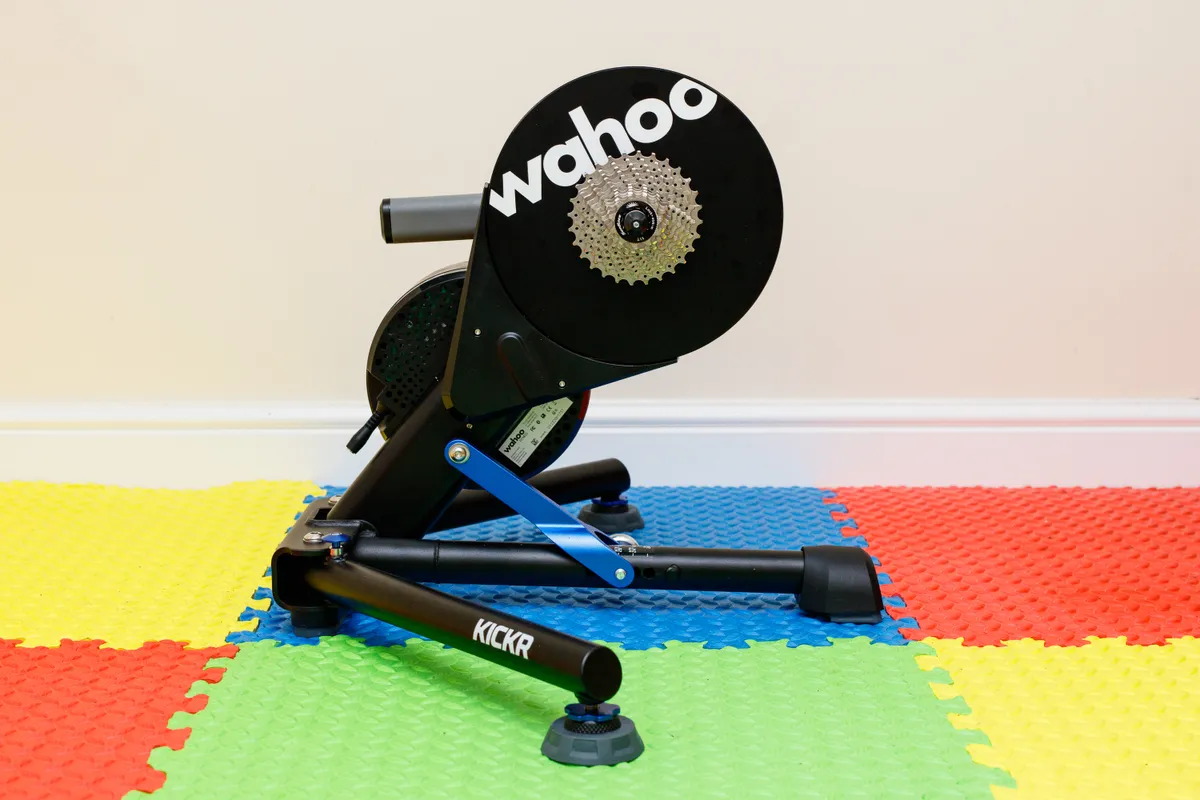
With a bit of reading or by working with a knowledgeable cycling coach, many of these so-called weaknesses become less and less of a problem and the data turns into an asset you can use to improve your fitness and performance.
The rise of indoor cycling apps has also made training with power more accessible than ever. The likes of Zwift, Wahoo RGT and Rouvy use your wattage (or an estimate of it, if you're not using a smart trainer) to help calculate your in-app speed and power your avatar as a result.
The workouts and training plans offered on most apps used power-based training zones, providing a helping hand to target specific areas of fitness.
Pros and cons of training with power
Pros
- Accurate, real-time reflection of output
- Can target specific training zones & adaptations
- Huge range of data
- Easier to track fitness progression
- Power training now an option through smart trainers and apps
Cons
- More expensive (but an increasing number of affordable options)
- Amount of data can be overwhelming
- Some power meters require calibration
How to train with heart rate and power together
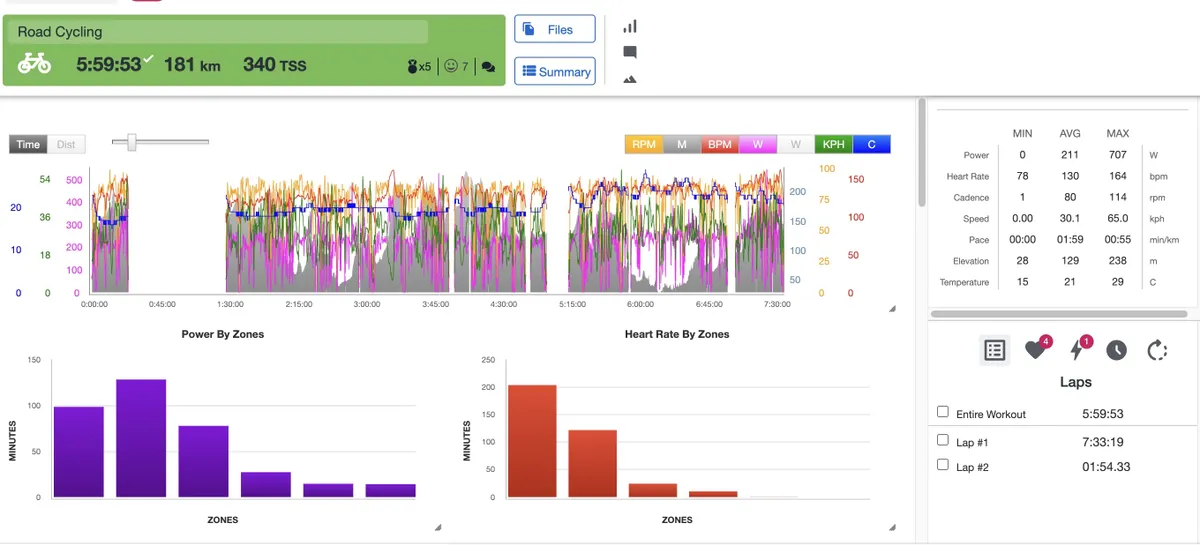
The best way to get the most value from heart rate and power-based training is to use both simultaneously. You’ll then have an input and an output measure to work with.
Not only will that give you wattage data to track improvements in power, but it will also give you heart rate data to better understand your body’s response to training.
By understanding and monitoring the relationship between the two, you’ll be able to draw far better conclusions from your data and make more informed decisions about how to create a training plan going forward.
So, what will training with both power and heart rate data allow you to do? Here are a few of the most useful ways to use the two tools together.
Testing and setting zones
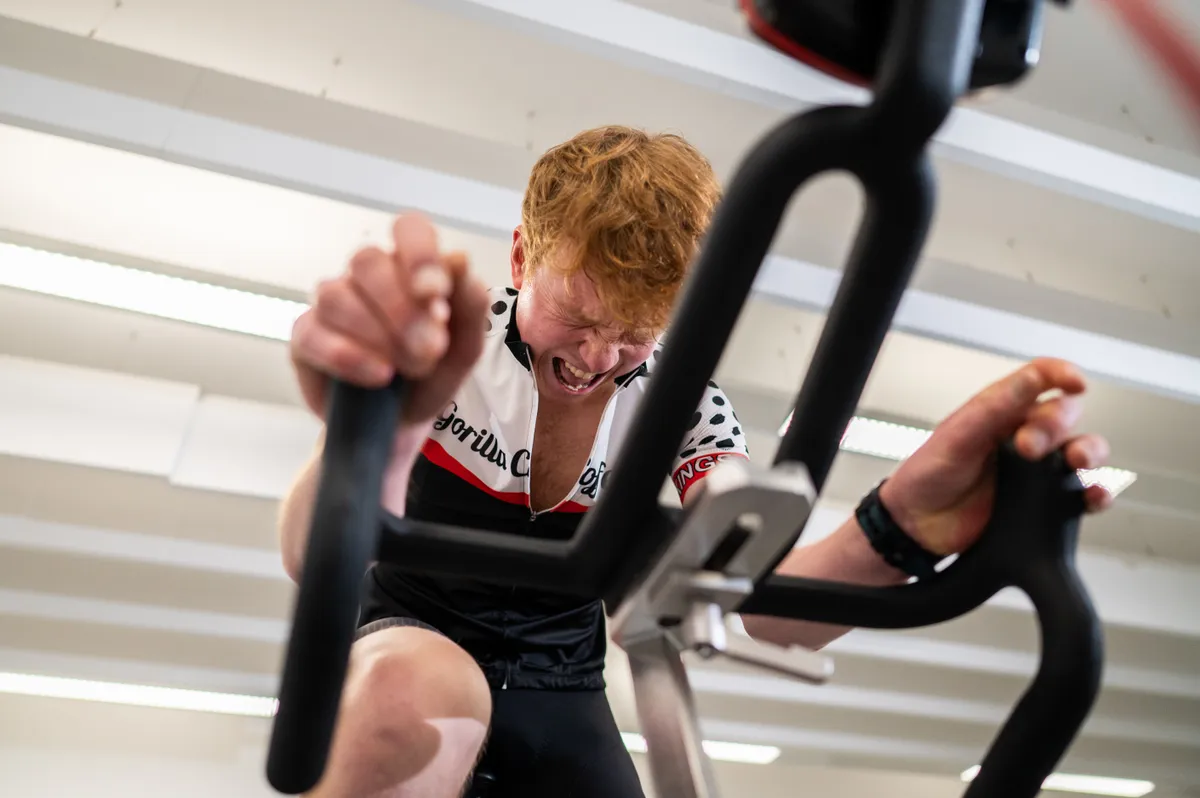
By performing a simple maximum heart rate or functional threshold heart rate test, as well as using power profile or Critical Power testing protocols, you’re able to set benchmarks for comparison against later down the line.
You can also establish your training intensity zones for each respective tool.
These heart rate and power intensity zones don’t need to line up perfectly, since each is measuring a different thing. What’s most important is to know how the two relate to each other for you as an individual.
Monitoring fitness progression
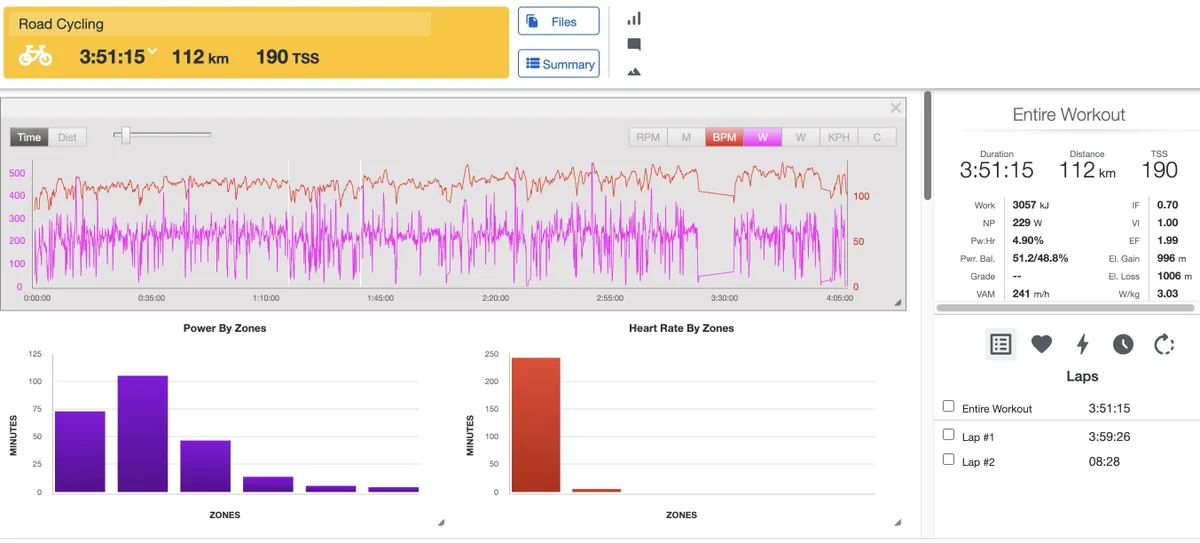
There are numerous ways that having both heart rate and power data at your disposal can help you assess how well your fitness is progressing, and whether your training plan is producing the desired results.
One such way is by looking at the ‘rate of decoupling’ within a workout. This is a measure of how much divergence there is between your heart rate and power during the course of a steady ride.
If heart rate goes up for a steady power output, we can say that some ‘level decoupling’ has occurred, meaning your efficiency has reduced over the course of the ride.
While this could be related to a number of the influencing factors mentioned earlier, it can help you to understand how aerobically fit you are and whether your endurance is sufficient for the duration and demands of what you’re preparing for.
Of course, it’s still possible to assess fitness progression if you only have access to either heart rate or power data.
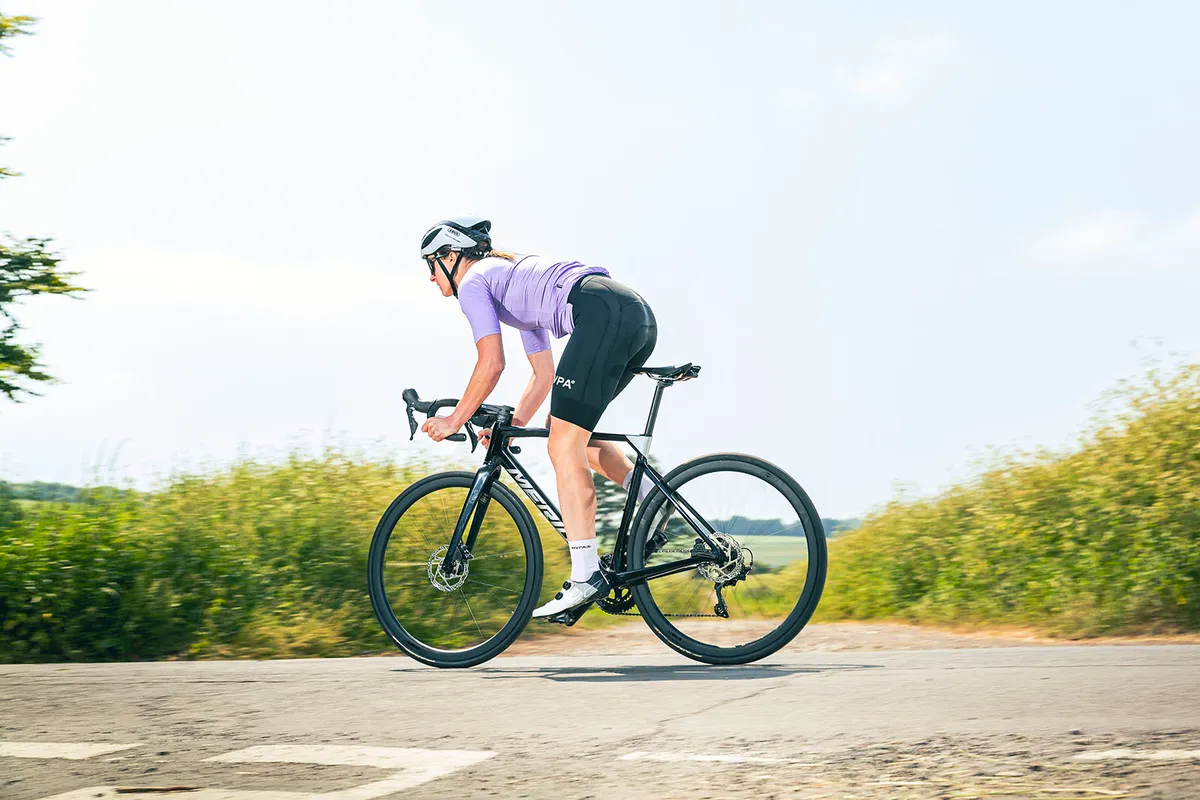
Where only heart rate data is available, try riding a real-world or virtual segment such as a climb at a steady heart rate and see if your time for the segment improves.
Just ensure the conditions and other factors are kept as similar as possible as you perform repeat tests.
With power, you can repeat the power profile test or FTP test (you can also complete an FTP test on Zwift) to get a good gauge on whether you’re seeing improvements in the right areas of your fitness, by comparing the results to the original benchmark testing.
Knowing your limits
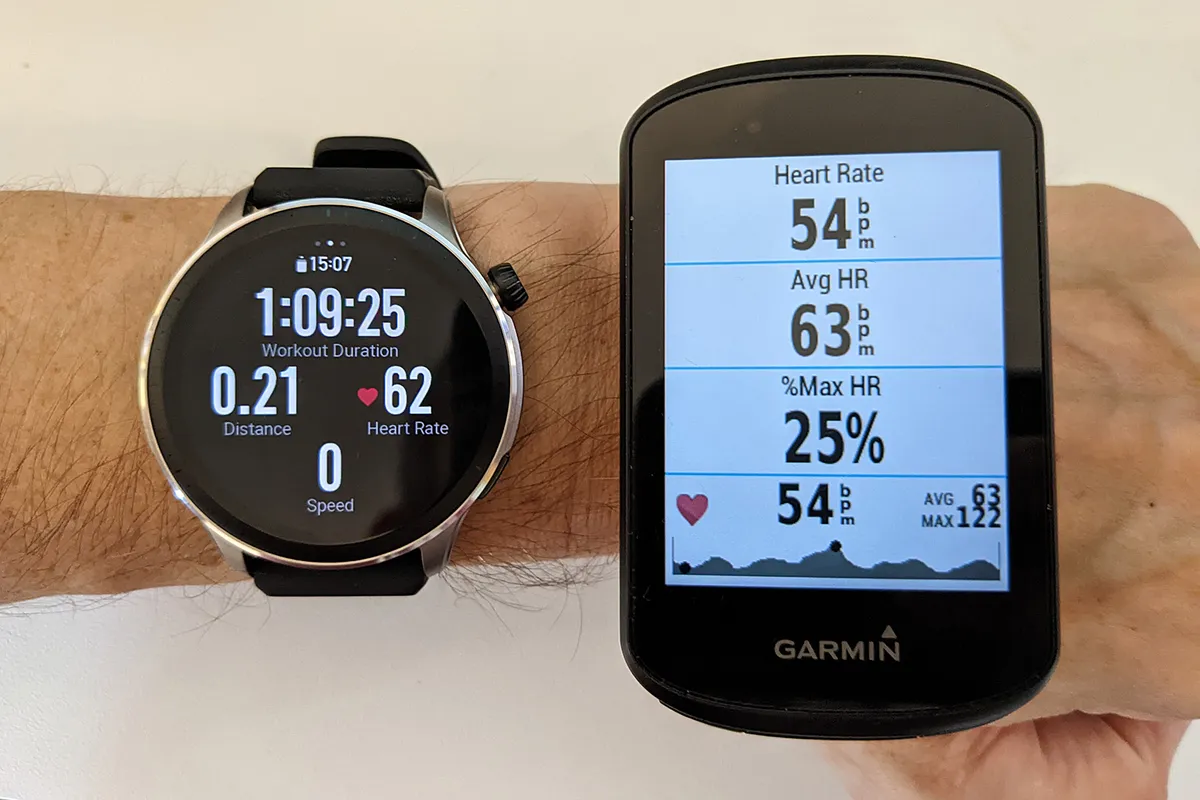
Is overtraining still possible when using heart rate and power together?
The short answer is yes, but if you build up an understanding of your data over time, and pay attention to the numbers, it can easily be avoided.
By training with both heart rate and power data together in most of your workouts, you’ll very quickly establish a picture of a normal heart rate to see for a given power output, or vice versa.
When you see the relationship between these numbers change dramatically, you can make decisions about what may have caused it and whether the change is a positive or a negative one.
Having an awareness of your limits can also help you pace efforts, both within training sessions and in competition.
Power is ideal as a pacing tool with its instant feedback, but you can also pace yourself during steadier hard efforts like a time trial or longer road or MTB race with heart rate.
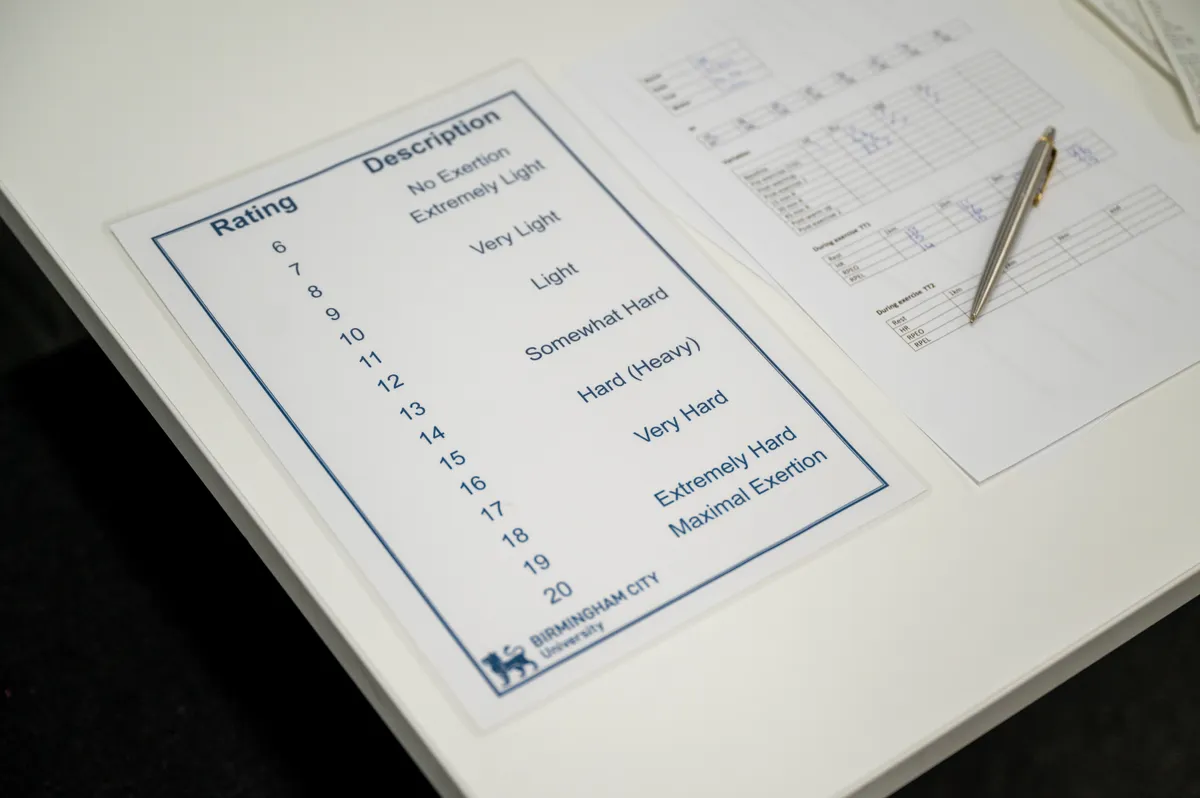
Use your own rating of perceived exertion in combination with the heart rate data, to help judge shorter efforts where heart rate data alone is less reliable.
You can combine this with your knowledge of previous training sessions and races to inform how hard to push and for how long.
